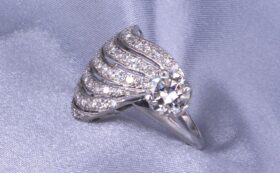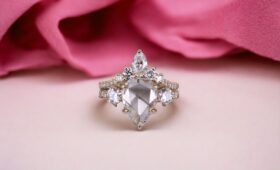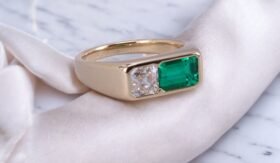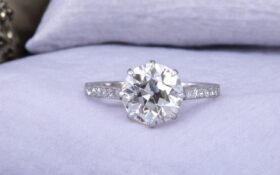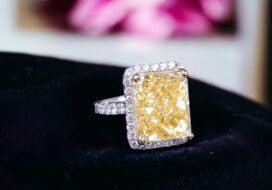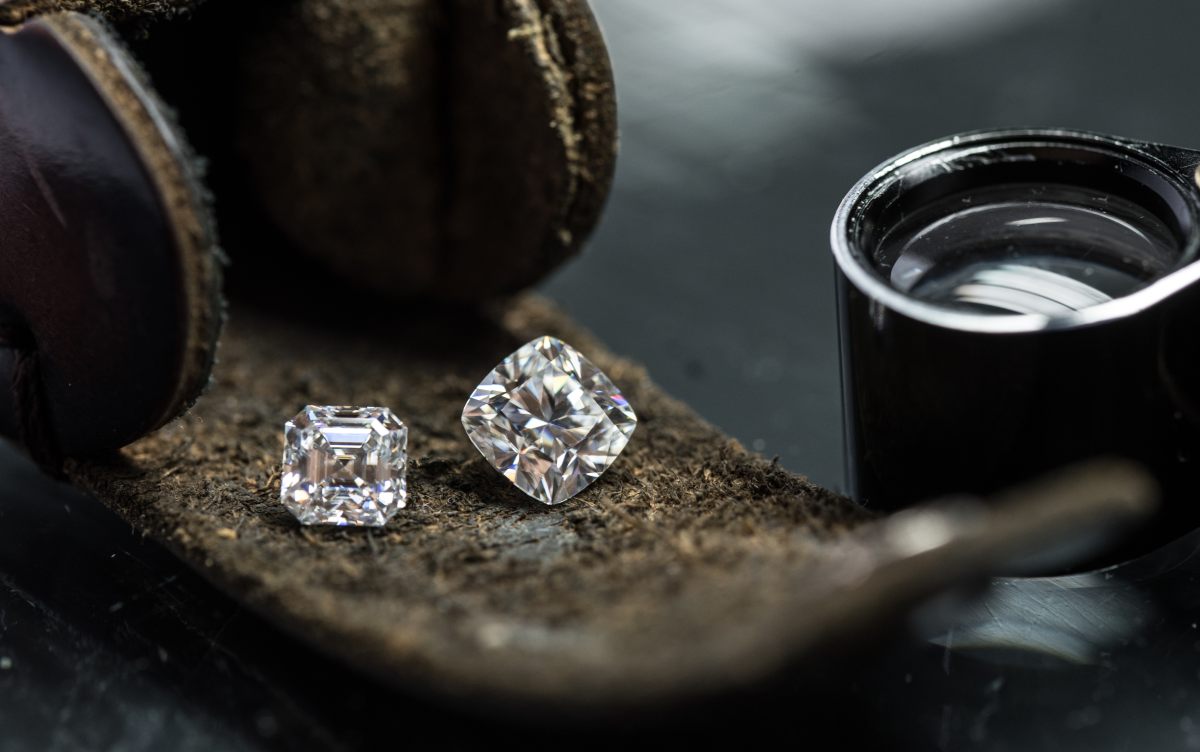
26 Jan San Diego Lab-Grown Diamonds: What You Need to Know
Lab-grown diamonds have been growing in popularity as an alternative to natural ones. One reason for this is that they provide beauty and brilliance at a fraction of the price of natural diamonds.
But what are lab-grown diamonds, and how do they compare to natural ones? That’s a question we have increasingly been asked by San Diego couples who are shopping for a diamond engagement ring.
At C. Blackburn Jewelers in La Jolla we are known for selling the finest natural diamonds, including antique cut stones. However, we are knowledgeable about lab-grown diamonds too, and offer them as an alternative choice to our clients.
So, in this article, we’ll explore the world of lab-grown diamonds, delving into the science behind their creation and discussing their benefits. We’ll examine their physical and chemical properties, highlighting differences and similarities with natural diamonds.
Additionally, we’ll address questions about the pricing and certification of lab-grown diamonds, giving you the knowledge to make an informed decision when buying a diamond for your engagement ring.
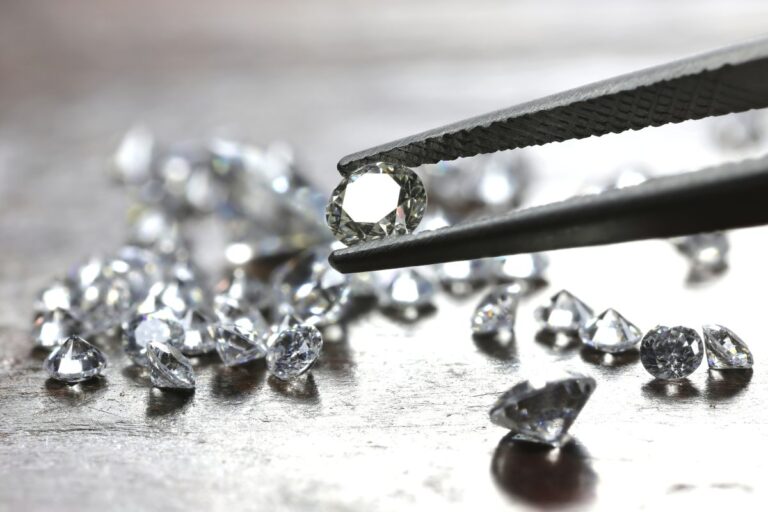
What are Lab-Grown Diamonds?
Lab-grown diamonds are also known as synthetic diamonds or cultured diamonds. They are diamonds created in a laboratory by using advanced technology that mimics the conditions under which natural diamonds are formed. These diamonds have the same chemical composition and crystal structure as natural diamonds, making them visually and chemically identical. The only difference is their origin: lab-grown diamonds are created in a controlled environment, while natural diamonds are formed deep within the Earth’s mantle over millions of years.
Some San Diego jewelry stores sell engagement rings set with diamond simulants like cubic zirconia or moissanite. Lab-grown diamonds should not be confused with these simulants, which may look similar to diamonds but have different chemical compositions and physical properties.
Lab-grown diamonds are genuine diamonds, with the same brilliance, hardness, and durability as natural diamonds, making them a practical and attractive choice. This why San Diego jewelry designers such as Carl Blackburn (who don’t work with diamond simulants) will set a custom engagement ring with a lab-grown diamond to interested customers.
The Differences Between Lab-Grown and Natural Diamonds
While lab-grown diamonds share many similarities with natural diamonds, there are a few key differences to consider. One of the main differences is their origin.
Natural diamonds are formed under extreme heat and pressure deep within the Earth’s mantle. Lab-grown diamonds are created in a laboratory using various methods, such as chemical vapor deposition (CVD) or high-pressure, high-temperature (HPHT) processes. Lab-grown diamonds can take weeks or months to produce, whereas natural diamonds take millions of years to form.
Another difference is the presence of imperfections. Natural diamonds often contain inclusions and blemishes, which are considered unique characteristics and can affect their clarity and value. In contrast, lab-grown diamonds are generally more likely to have fewer imperfections, resulting in higher clarity grades. However, it’s important to note that lab-grown diamonds can still have inclusions and blemishes, albeit to a lesser extent.
Cost is another factor to consider. Lab-grown diamonds are more affordable than natural diamonds, often priced at around 80-90% less. This is because the production process for lab-grown diamonds is more controlled and predictable, whereas natural diamonds are subject to the uncertainties and costs associated with mining and exploration.
Additionally, lab-grown diamonds are not subject to the same supply and demand dynamics as natural diamonds, allowing for more competitive pricing. It’s important to keep in mind that the prices of lab-grown diamonds can vary greatly among San Diego jewelry stores —with local jewelers often offering far better prices for a lab-grown diamond engagement ring than big online retailers like Blue Nile.
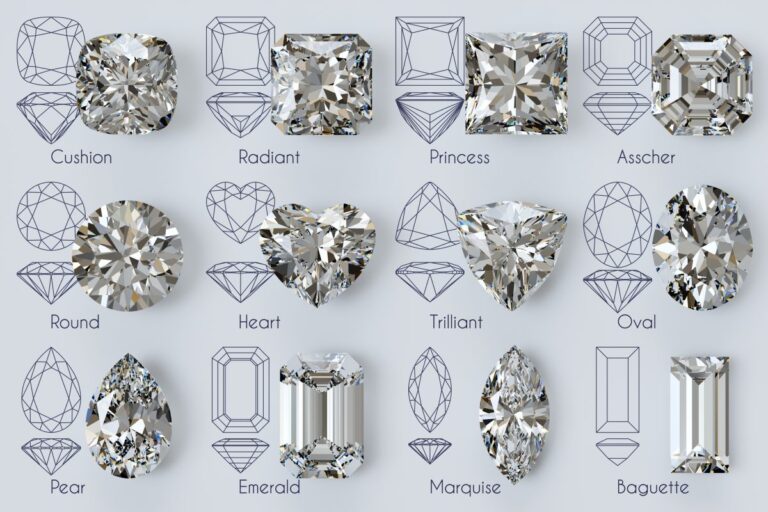
The Benefits of Lab-Grown Diamonds
Lab-grown diamonds are an attractive choice for some San Diego couples because of the wide range of options available at an affordable price. Lab-grown diamonds can be created in various sizes, shapes, and colors, giving consumers more flexibility in choosing the perfect diamond for their needs.
Whether you’re looking for a classic round brilliant diamond or a fancy colored diamond, lab-grown diamonds offer a diverse selection to suit any style or preference.
The Process of Creating Lab-Grown Diamonds
The process of creating lab-grown diamonds involves advanced technology and specialized equipment. There are two main methods used: chemical vapor deposition (CVD) and high-pressure, high-temperature (HPHT). The lab-grown diamonds available at jewelry stores in La Jolla and San Diego use either of these methods.
In the CVD method, a small diamond seed is placed in a sealed chamber with a carbon-rich gas. When the gas is heated, the carbon atoms separate and deposit onto the diamond seed, layer by layer, gradually growing a larger diamond. This process can take several weeks or even months, depending on the desired size and quality of the diamond.
The HPHT method involves placing a small diamond seed in a pressurized chamber and subjecting it to high temperatures and pressures. This mimics the natural conditions under which diamonds are formed in the Earth’s mantle. The carbon atoms in the chamber crystallize and bond together, creating a larger diamond. This process typically takes a shorter time compared to CVD, but it requires higher temperatures and pressures.
Both methods result in the growth of high-quality diamonds that are visually and chemically identical to natural diamonds.
Lab-Grown Diamond Certificates in San Diego
When it comes to purchasing lab-grown diamonds in San Diego, it’s important to ensure that they come with the necessary certifications and guarantees. Just like natural diamonds, lab-grown diamonds can be certified by reputable gemological laboratories, such as the International Gemological Institute (IGI).
These lab-grown diamond certificates (grading reports) provide an independent assessment of the diamond’s quality, including its cut, color, clarity, and carat weight.
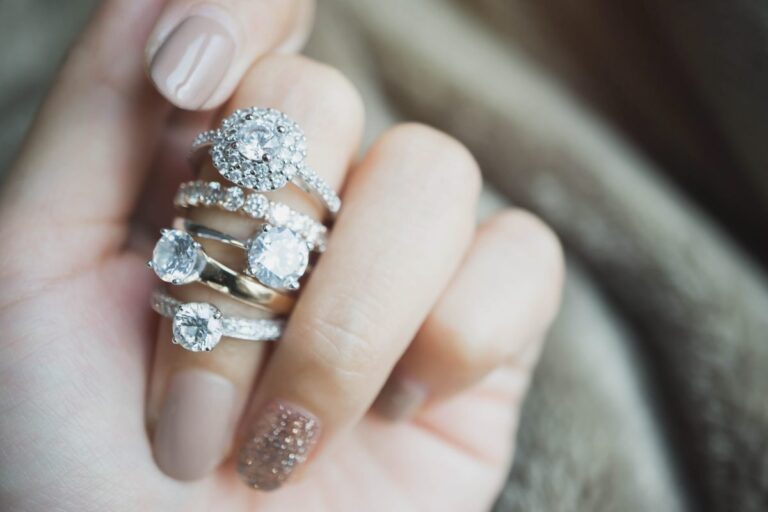
Who is Buying Lab-Grown Diamonds?
The market for lab-grown diamonds has been steadily growing in recent years. According to industry reports, the lab-grown diamond market is projected to reach billions of dollars in the coming years, indicating a significant shift in consumer preferences.
Lab-grown diamonds are gaining popularity among millennials and younger consumers. They offer a way to enjoy the beauty and luxury of diamonds without the high dollar price of natural diamonds.
As more consumers become aware of the financial benefits and options available, the market for lab-grown diamonds is expected to continue expanding. This is another reason why you’ll find lab-grown diamond engagement rings being sold by San Diego jewelry stores who do not sell inexpensive simulants like cubic zirconia.
How to Buy Lab-Grown Diamonds in San Diego
When it comes to buying lab-grown diamonds, there are a few key factors to consider. First and foremost, it’s important to choose a reputable and trustworthy San Diego fine jeweler. Look for local jewelers who have been in the industry for a while and have a good track record. Check if they provide diamond certifications from reputable gemological laboratories like IGI.
Next, consider your budget and preferences. Lab-grown diamonds offer a wide range of options in terms of size, shape, and color, so think about what suits your style and needs. It’s also a good idea to compare prices and quality across different San Diego jewelry stores (as well as online retailers like Brilliant Earth) to ensure you’re getting the best value for your money.
Lastly, don’t forget to consider the setting and design of the jewelry. Lab-grown diamonds can be set in various metals and styles, so choose something that complements your personal taste and lifestyle.
Many couples choose to save money on a lab-grown diamond so they can more readily afford a unique custom designed engagement ring from a San Diego jewelry designer like Carl Blackburn at C. Blackburn Jewelers in La Jolla.


